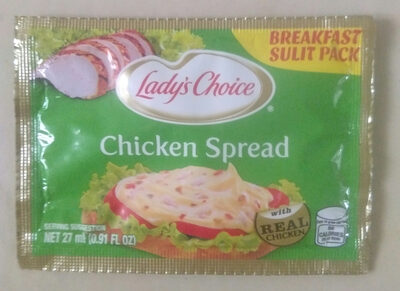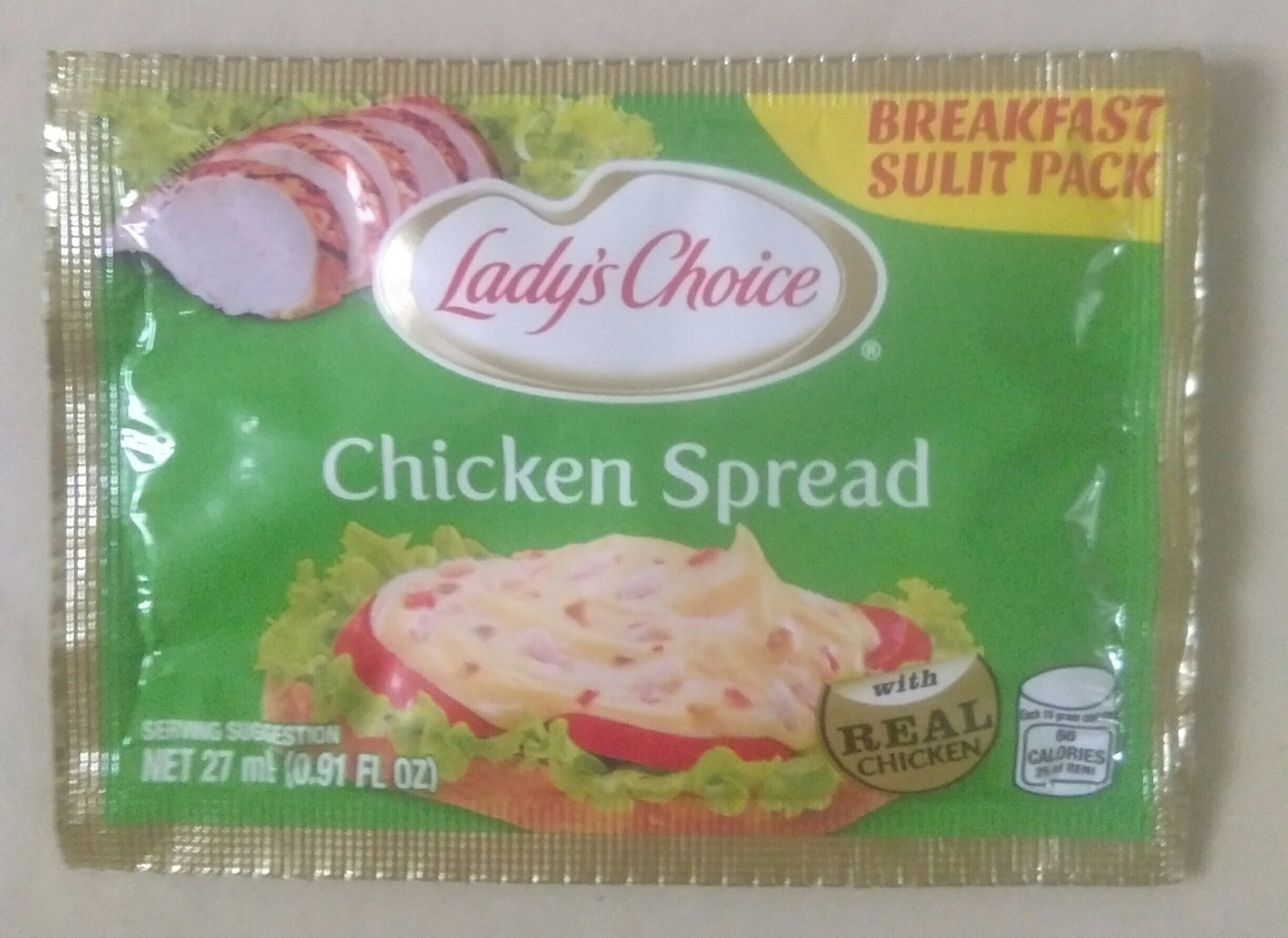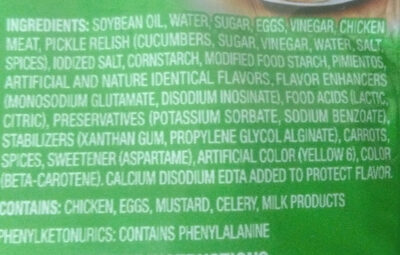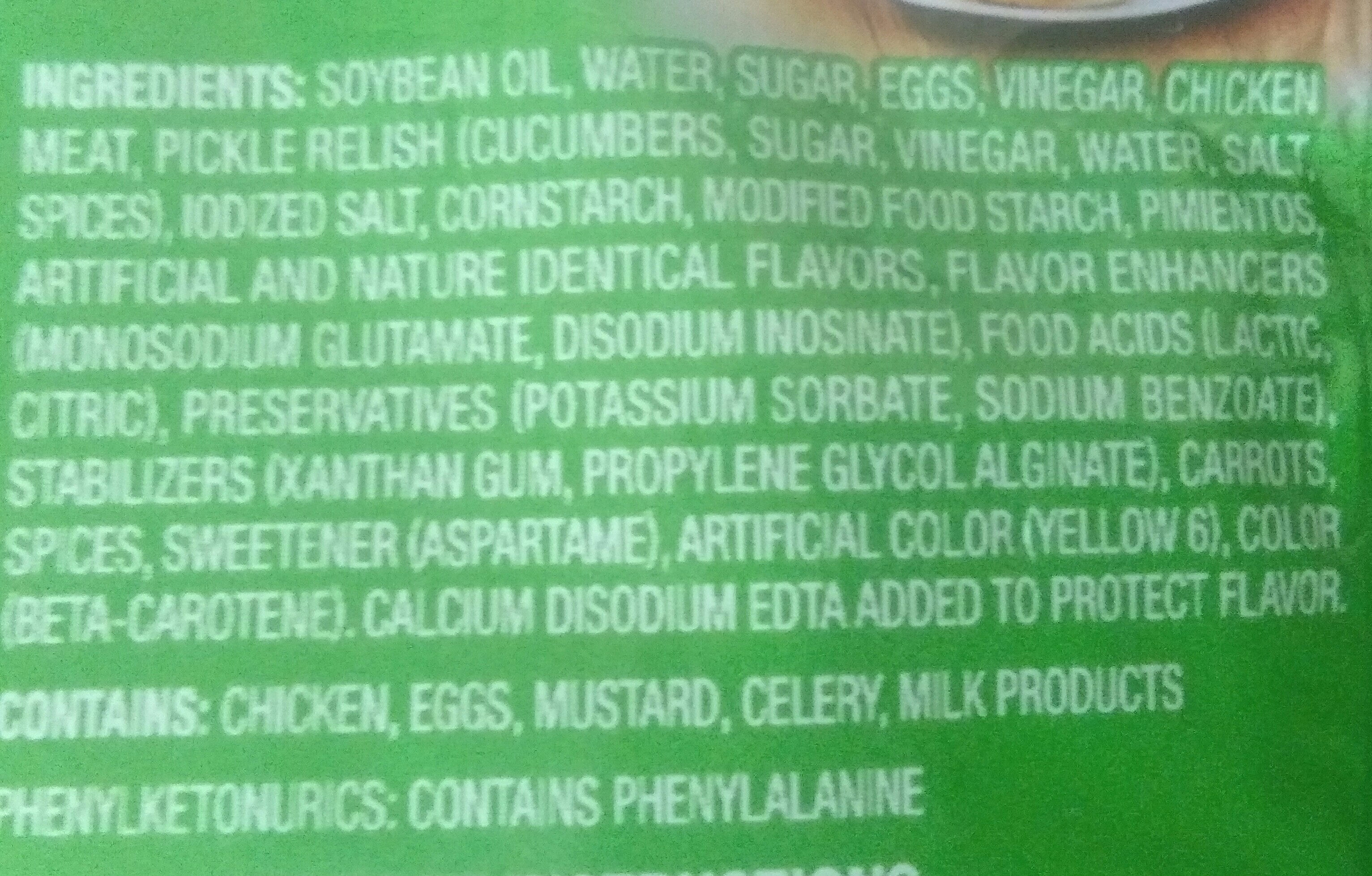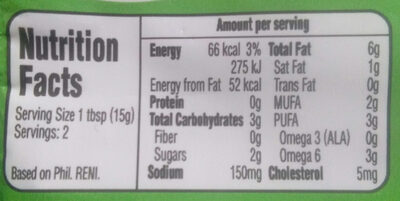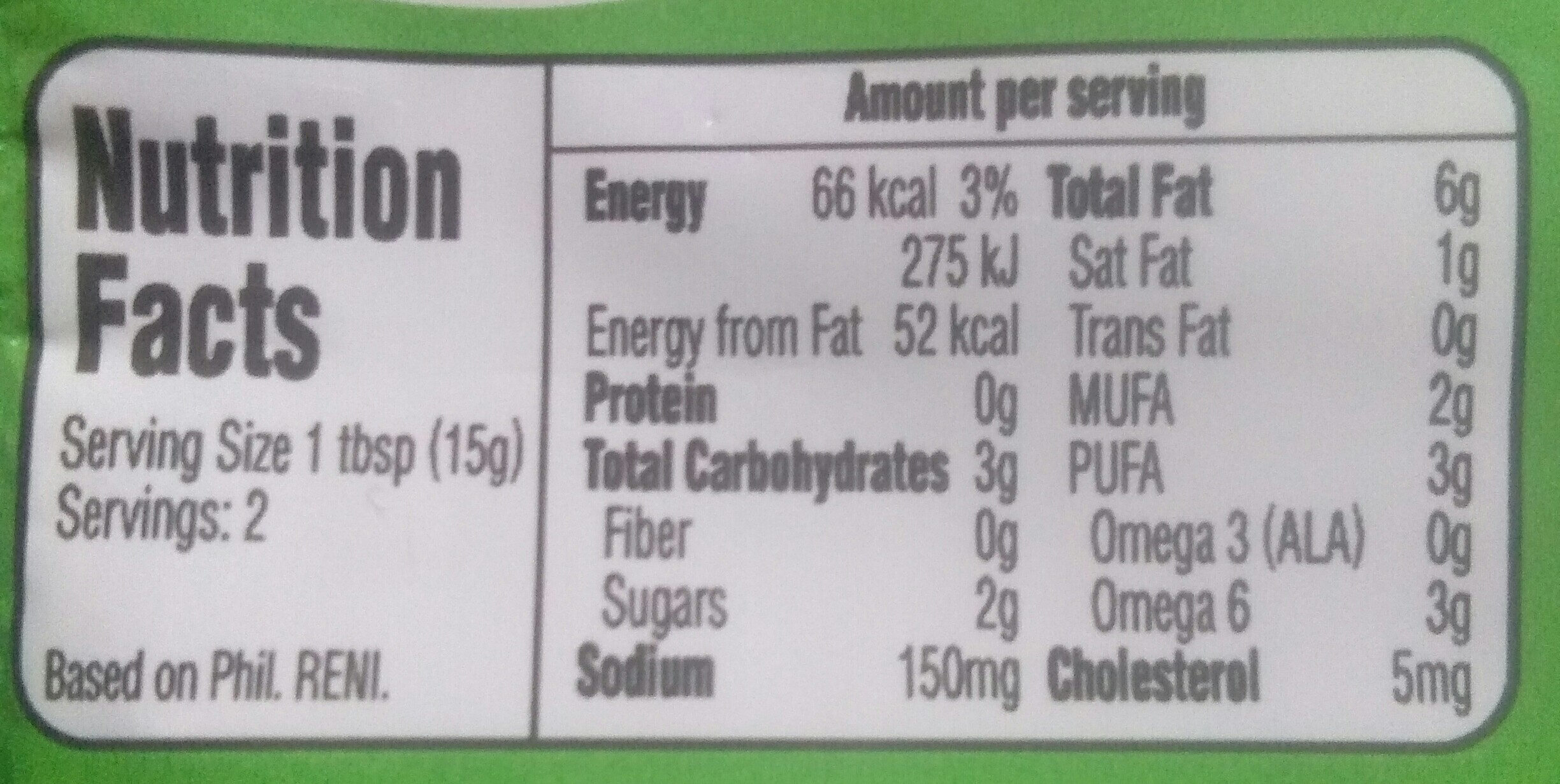Lady's Choice chicken 27ml
This product page is not complete. You can help to complete it by editing it and adding more data from the photos we have, or by taking more photos using the app for Android or iPhone/iPad. Thank you!
×
Barcode: 4800888607119 (EAN / EAN-13)
Quantity: 27ml
Packaging: Unilever Philippines Inc.
Brands: Lady's Choice
Origin of ingredients: Philippines
Manufacturing or processing places: Cavite
Stores: SM
Countries where sold: Philippines
Matching with your preferences
Environment
Packaging
Transportation
Report a problem
Data sources
Product added on by hochelaga
Last edit of product page on by foodless.
Product page also edited by hungergames, openfoodfacts-contributors, vaporous.
If the data is incomplete or incorrect, you can complete or correct it by editing this page.
